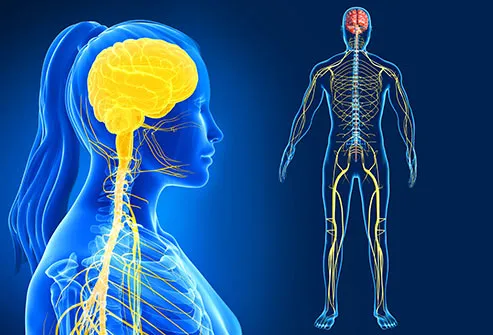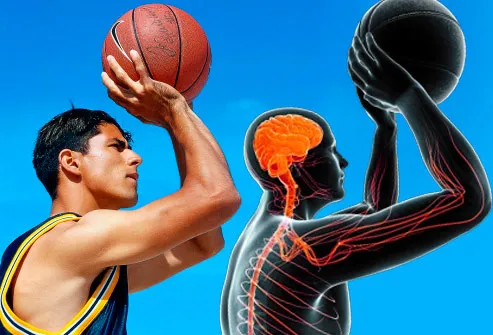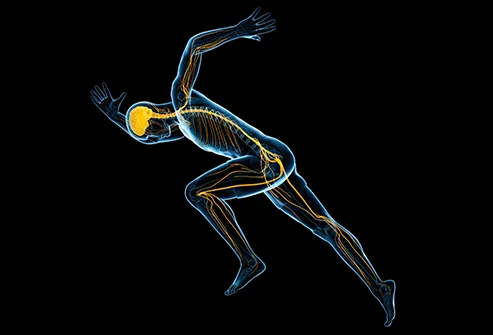Your Command Central
Made up of billions of nerve cells called neurons, your nervous system is what lets you do everything from breathe to walk to dream. It has two main parts: the central nervous system, which includes the brain and spinal cord, and the peripheral nervous system (all the other nerves in your body).
Who's Running the Show?
Your nervous system works both on autopilot and with you in control. A voluntary action is something that takes conscious thought, like when you walk or clap your hands. That uses the somatic nerves. Involuntary actions are things like your heartbeat that happen whether or not you're thinking or doing anything about it. That's the autonomic system.
Sympathetic Nervous System
This part of your autonomic system is in charge of your body's "fight or flight" response. When you come across a threat, your sympathetic nervous system kicks into gear, quickly changing body processes like your breathing and heart rate so that you have extra energy and are ready to face the danger or run away.
Parasympathetic Nervous System
The other part of your autonomic system has the opposite effect. It's the brake pedal to the sympathetic nervous system's gas pedal. It takes over with the "rest and digest" response to bring you back to normal after the danger has passed.
Don't Drain Your Brain
Stress that doesn't let up leaves your sympathetic nervous system on alert. And over time, that can lead to you losing your mental sharpness. You may take longer to react to things and make more errors. (High levels of stress also affect your physical health, including weakening your immune system and raising your chance of heart disease.)
Neurons
They're how your brain and body "talk" to each other. These nerve cells use special parts to communicate. The axon releases a chemical called a neurotransmitter that's picked up by the dendrite of another neuron, where it's turned into an electrical signal. Sensory neurons respond to things like sound, smell, and touch and deliver the info to your brain. Motor neurons bring messages from your brain to your muscles.
 ::::::::::::::::::::::::::::::::::::::::::::::::::::::::::::::::::::::::::::::::::::::::::::::::::::::::::::::::::::::::::::::::::::::::::::::::::::::::::::::::::
::::::::::::::::::::::::::::::::::::::::::::::::::::::::::::::::::::::::::::::::::::::::::::::::::::::::::::::::::::::::::::::::::::::::::::::::::::::::::::::::::
----------------------------------------------------
::::::::::::::::::::::::::::::::::::::::::::::::::::::::::::::::::::::::::::::::::::::::::::::::::::::::::::::::::::::::::::::::::::::::::::::::::::::::::::::::::








No comments:
Post a Comment
Thank You for leaving a comment.
Attempts to redirect viewers of this blog to another website and / or any marketing, will be removed.
Note: Only a member of this blog may post a comment.